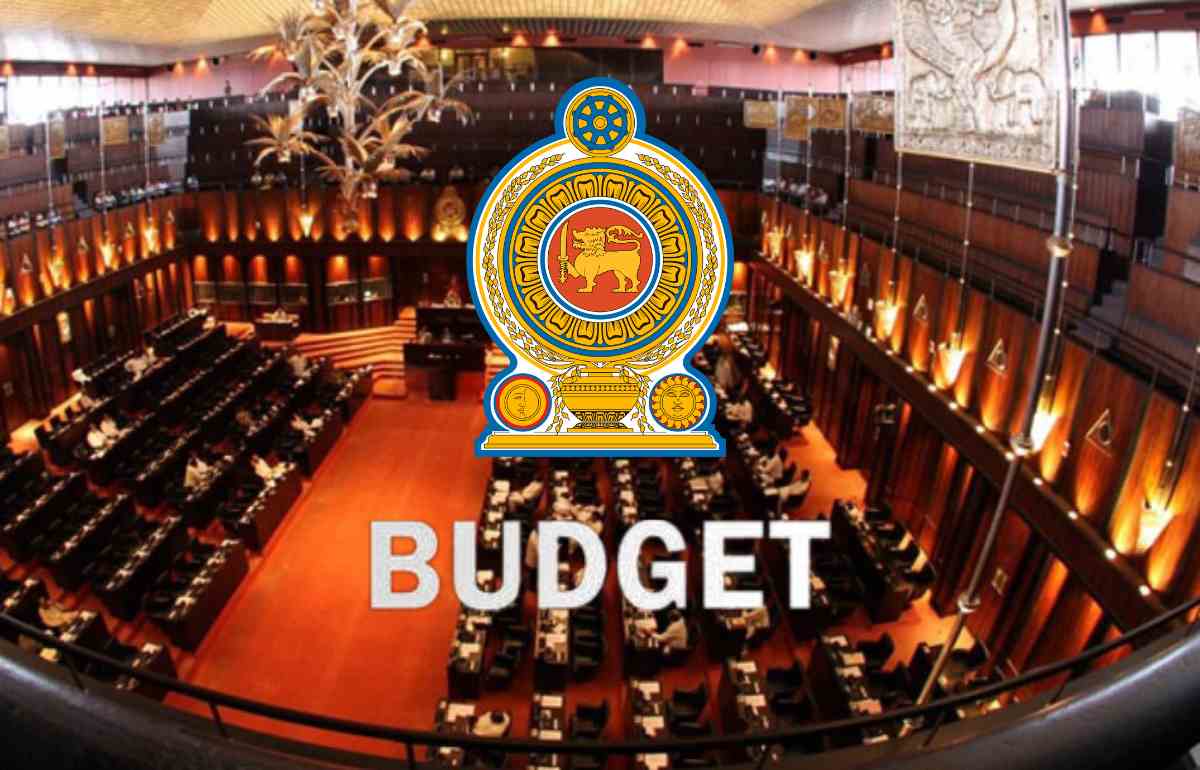
2025 Interim Budget: Fiscal Discipline amid Economic Recovery
- CNL Reporter
- November 30, 2024
- Weekly Economic Review
- 2025 Interim Budget: Fiscal Discipline amid Economic Recovery
- 0 Comments
Weekly Economic Review
Sri Lanka’s economic recovery hinges on a delicate balance of fiscal discipline, debt restructuring, and policy reforms. While significant progress has been made, challenges remain in managing public spending, addressing social inequities, and sustaining economic growth.
The government’s commitment to reform, supported by international creditors and financial institutions, offers hope for overcoming the current crisis. With effective implementation, Sri Lanka can achieve its goals of debt sustainability, financial stability, and inclusive development.

The interim Vote on Account for 2025 reflects Sri Lanka’s commitment to balancing fiscal prudence with economic recovery. Aligned with IMF stipulations, the budget prioritizes revenue generation, expenditure discipline, and the protection of vulnerable groups through enhanced social safety nets.
Key allocations for the first four months of 2025 include:
Total Expenditure: Rs 1.65 trillion, ensuring essential services and ongoing development projects.
Recurrent Expenditure: Rs 1.17 trillion for salaries, pensions, and essential services.
Capital Expenditure: Rs 184 billion, emphasizing infrastructure and development.
The interim measure bridges the gap until the comprehensive 2025 Budget is presented in January, with debates planned for February and March. This fiscal approach underscores continuity in public services, debt restructuring efforts, and macroeconomic stability.
Additionally, a supplementary allocation of Rs 219.37 billion will have to be approved for 2024 to manage liabilities and essential spending, reinforcing the government’s commitment to staying within expenditure limits and the debt ceiling.
Restructuring International Sovereign Bonds (ISBs): A Milestone in Debt Management
Sri Lanka’s $19 billion ISB restructuring represents a pivotal step in addressing its debt crisis. The government has proposed a debt exchange program aimed at reducing the debt burden while aligning repayments with economic performance. Key components of the restructuring include:
Debt Reduction: An upfront reduction of $3.2–4.6 billion, contingent on economic growth.
Extended Maturities: Bond maturities lengthened by over five years.
Lower Interest Rates: Reduced from an average of 6.4% to 4.4%.
Economic Growth Linkage: Payments from 2028 depend on GDP growth, ensuring sustainability.
Terms of the Restructuring Agreement
Principal Reduction: 28% decrease in owed principal.
Defaulted Interest Reduction: 11% reduction in unpaid interest.
Fee Payments: A $225 million fee upon restructuring completion.
Interest Rates: 3.5%-5.5% for the first eight years, rising to 8.75%-9.75% after 2033.
Repayment Schedule: Defaulted interest repaid by 2028, with principal payments from 2029-2036.
The restructuring agreement awaits approval from bilateral creditors and the IMF before being voted on by bondholders. If successful, it promises significant debt service savings, bolstering economic recovery and investor confidence.
Implications of Debt Restructuring
The restructuring process has garnered support from key stakeholders, including the Ad Hoc Group of Sri Lanka Bondholders and local financial institutions. These entities have agreed to participate in the debt exchange, which incorporates GDP-linked bonds to align debt service with economic performance.
Central Bank Governor Nandalal Weerasinghe emphasized the plan’s sustainability, noting that annual foreign debt payments will remain at 4.5% of GDP, with major repayments deferred to 2032-2040. He dismissed concerns about repayment challenges, highlighting the program’s alignment with international best practices.

The government projects that successful restructuring will reduce debt service obligations by $9.5 billion over four years, cut coupon rates to 4.4%, and extend bond maturity profiles by over five years. This process is essential for restoring financial stability and normalizing relations with creditors.
Monetary Policy Reforms
Alongside fiscal measures, Sri Lanka has implemented monetary policy adjustments to enhance economic stability. The Central Bank adopted a single Overnight Policy Rate (OPR) at 8%, replacing the dual-rate system. This decision, effective November 27, aims to improve the transmission of policy rates to market rates, fostering financial stability.
Additionally, the Central Bank reduced the effective policy interest rate by 50 basis points to support its Flexible Inflation Targeting framework. This move aligns with broader efforts to manage inflation while ensuring market liquidity.
Challenges in Public Spending
Sri Lanka’s rising domestic debt and substantial interest payments have drawn criticism, particularly regarding the allocation of public funds. In the 2024 budget, Rs 2,651 billion (40% of total expenditure) was allocated to interest payments, surpassing combined spending on health, education, and social protection.
In comparison:
Health, Education, and Social Protection: Account for 14% of total expenditure by the central government, with an additional 4% from provincial governments.Defense Spending: Constitutes 9% of total expenditure.
This disparity underscores the burden of debt servicing on public finances, limiting the government’s capacity to invest in critical sectors.
Government’s Policy Direction
Under the leadership of President Anura Kumara Dissanayake, the leftist government has pledged to pursue economic reforms that balance structural adjustments with social equity. Key priorities include:

Inclusive Growth: Focus on reducing inequality and expanding access to essential services.
Public Sector Efficiency: Streamlining operations to improve service delivery.
Anti-Corruption Measures: Strengthening governance and accountability to rebuild public trust.
However, these reforms face significant hurdles, including inflationary pressures and public dissatisfaction with austerity measures. The government must carefully navigate these challenges to maintain political stability while fostering economic recovery.
International Support and Future Prospects
The IMF has expressed optimism about Sri Lanka’s reform agenda, emphasizing the importance of collaborative efforts among bondholders, creditors, and financial institutions. Managing Director Kristalina Georgieva commended the government’s determination to achieve high and sustained growth, highlighting the role of debt restructuring in underpinning these efforts.
The successful launch of the ISB exchange is seen as a milestone in regaining market confidence and re-establishing access to international capital markets. By reducing debt burdens and implementing growth-oriented policies, Sri Lanka aims to lay a foundation for long-term economic stability.

